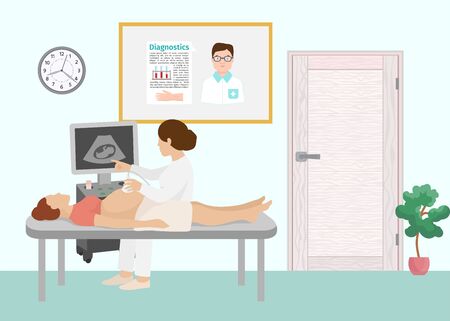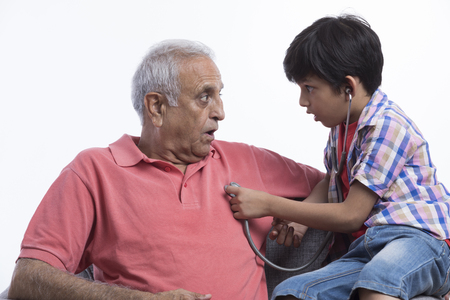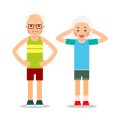Understanding Stroke and Its Impact on Communication
Stroke is a significant health concern in India, affecting lakhs of individuals every year. According to recent studies, India has witnessed a rising incidence of stroke, particularly among the middle-aged and elderly population. A stroke occurs when blood flow to a part of the brain is interrupted or reduced, resulting in damage to brain cells. One of the most common and debilitating consequences of stroke is its impact on communication abilities. Many stroke survivors in India experience difficulties with speaking, understanding language, reading, or writing—a condition medically known as aphasia. These challenges can greatly affect daily life, personal relationships, and even the ability to return to work. Recognising these impacts is crucial for families and healthcare providers, especially in a diverse country like India where multiple languages and dialects are spoken across regions. By understanding how stroke affects speech and language, we can better appreciate the importance of timely and culturally appropriate speech therapy interventions for recovery.
Role of Speech Therapy in Stroke Rehabilitation
After a stroke, many individuals in India face significant challenges with communication, often due to conditions like aphasia and dysarthria. Speech therapy plays a vital role in helping these patients regain their ability to speak, understand, read, and write. In the Indian context, where multiple languages and dialects are spoken at home and in the community, personalized speech therapy becomes even more essential for effective recovery.
How Speech Therapy Supports Communication Recovery
Speech-language pathologists (SLPs) work closely with stroke survivors to identify specific areas of difficulty. Using evidence-based techniques, SLPs design tailored rehabilitation plans that address individual needs. Common strategies include:
- Aphasia therapy: Activities focused on improving word finding, sentence construction, and understanding language.
- Dysarthria therapy: Exercises aimed at strengthening oral muscles and improving clarity of speech.
- Cognitive-communication training: Techniques to enhance memory, attention, and problem-solving related to communication tasks.
Common Post-Stroke Communication Disorders in India
| Disorder | Description | How Speech Therapy Helps |
|---|---|---|
| Aphasia | Difficulty in speaking, understanding, reading, or writing due to brain damage | Language exercises using local languages; visual aids; group activities involving family members |
| Dysarthria | Slurred or slow speech caused by weakened muscles used for talking | Oral-motor exercises; breath control drills; use of culturally familiar phrases for practice |
| Apraxia of Speech | Trouble planning and coordinating the movements needed for speech | Repetition of syllables; step-by-step instruction in native language; rhythmic cueing methods |
The Importance of Cultural Sensitivity in Indian Contexts
Given Indias linguistic diversity, speech therapists often incorporate regional languages like Hindi, Tamil, Bengali, or Kannada into therapy sessions. Family involvement is encouraged to ensure communication goals align with daily life requirements—such as temple visits, market interactions, or household conversations. This approach not only accelerates recovery but also boosts patient confidence in real-world situations.

3. Cultural and Linguistic Diversity in India: Tailoring Speech Therapy
India is renowned for its rich cultural heritage and linguistic variety, with over 22 officially recognised languages and hundreds of regional dialects spoken across the country. This diversity plays a significant role in shaping communication patterns, social interactions, and even medical interventions like speech therapy. When designing speech therapy plans for stroke survivors in India, it is essential to consider these multiple languages, dialects, and cultural backgrounds to ensure effective recovery and patient engagement.
Many Indian patients are multilingual or use a mix of local dialects at home and official languages in public settings. For example, a patient might speak Hindi with family but use English or another regional language at work. Effective speech therapy should therefore incorporate the patient’s dominant language(s) and reflect their daily communication needs. Ignoring linguistic preferences can lead to frustration, poor progress, and reduced confidence in speaking.
Cultural factors also strongly influence therapy outcomes. Social norms, familial roles, religious practices, and beliefs about health impact both the patient’s motivation and the expectations of their caregivers. A culturally sensitive approach respects these nuances—such as including family members in sessions or using familiar stories, songs, and proverbs during exercises—which can boost participation and relevance.
Furthermore, therapists must be aware of unique challenges such as code-switching (shifting between languages), accent variations, and the need for region-specific materials. Customising assessment tools and exercises ensures that therapy remains meaningful to each individual. Ultimately, by embracing India’s cultural and linguistic mosaic within therapy plans, clinicians can significantly enhance language and speech recovery after stroke for Indian patients.
4. Common Speech Therapy Approaches Used in India
Speech therapy after stroke is most effective when tailored to the patient’s linguistic, cultural, and social background. In India, speech-language pathologists (SLPs) have adapted evidence-based techniques to suit local languages and family structures. This ensures that therapy is not only clinically sound but also practical and accessible for Indian patients.
Evidence-Based Techniques Adapted for Indian Context
Therapists in India commonly use a blend of globally accepted methods and locally developed interventions. Some of the key approaches include:
| Approach | Description | Adaptation for Indian Settings |
|---|---|---|
| Language Stimulation Activities | Engaging patients in structured conversations, storytelling, and naming tasks | Use of regional stories, folk tales, and everyday scenarios relevant to patient’s culture |
| Articulation Therapy | Exercises focused on improving clarity of specific sounds or words | Emphasis on sounds unique to Indian languages such as retroflex consonants |
| Group Therapy Sessions | Involving multiple patients for peer support and practice | Conducted in vernacular languages to foster comfort and participation |
| Cognitive-Linguistic Therapy | Improving memory, attention, and problem-solving as related to communication | Integration of puzzles, games, and culturally familiar materials (e.g., cricket scores, Bollywood dialogues) |
| AAC (Augmentative & Alternative Communication) | Use of pictures, symbols, or electronic devices for those with severe speech impairment | Customizing boards or apps with local scripts (Hindi, Tamil, Bengali, etc.) and common phrases used in daily life |
The Role of Local Language Resources
India’s linguistic diversity requires speech therapy materials to be available in multiple regional languages. Many SLPs develop customized worksheets, flashcards, and digital resources using scripts like Devanagari, Telugu, or Malayalam. These tools help bridge gaps in communication recovery for patients who are not fluent in English.
Family Involvement: A Key Component in India
The family plays a central role in rehabilitation after stroke in India. Therapists often train family members on how to assist with home exercises and encourage communication throughout daily routines. Family involvement increases motivation and improves outcomes by providing consistent support outside clinical sessions.
Examples of Family Support Strategies:
- Participating in therapy sessions as communication partners
- Using home language(s) during practice activities
- Reinforcing daily use of new words or strategies learned in therapy
- Celebrating small achievements to boost morale and confidence
Summary Table: Key Features of Speech Therapy Approaches in India
| Main Feature | Description/Adaptation |
|---|---|
| Linguistic Diversity | Therapy delivered in patient’s mother tongue whenever possible; materials adapted accordingly. |
| Cultural Relevance | Use of Indian festivals, food items, relationships (e.g., “dadi” for grandmother) in therapy tasks. |
| Family Engagement | Active training for caregivers to continue exercises at home. |
5. The Role of Family and Community in Recovery
Recovering from a stroke is not a journey that a patient undertakes alone, especially in India where family and community ties run deep. The active involvement of family members and the broader community can significantly enhance the effectiveness of speech therapy, supporting both language and speech recovery. Family members, including spouses, children, and even neighbours, are often the primary caregivers who spend the most time with the patient. Their understanding, patience, and encouragement play a critical role in motivating the stroke survivor to participate in therapy activities and daily communication practice.
Family Support: A Pillar of Communication Recovery
Families can support stroke survivors by creating a positive and encouraging environment at home. Simple acts such as speaking slowly, using clear sentences, and giving the person enough time to respond are essential. It is also beneficial to involve the patient in regular conversations about familiar topics, whether it is discussing daily news in Hindi or reminiscing about family traditions. These interactions reinforce language skills learnt during therapy sessions.
Tips for Caregivers
- Be patient and avoid finishing sentences for the patient.
- Use gestures or visual aids if needed to enhance understanding.
- Create a routine that includes regular speech exercises as suggested by the therapist.
- Encourage participation in family events and local festivals, which offer natural opportunities for social interaction.
- Celebrate small improvements to boost morale.
The Role of Community: Extending the Circle of Support
The broader Indian community—friends, neighbours, religious groups, and local clubs—can also play a significant part. Community support groups, especially those conducted in local languages like Hindi, Tamil, or Bengali, provide a safe space for stroke survivors to practice speaking without judgement. Community health workers and Anganwadi workers can help bridge the gap between clinical care and home-based support by offering guidance and resources tailored to local contexts.
Cultural Sensitivity Matters
Respecting cultural practices and using familiar forms of address or greetings helps make speech therapy more relatable for Indian patients. Involving elders, participating in traditional songs or prayers, and sharing stories rooted in Indian culture can make communication exercises more engaging. Ultimately, when families and communities unite to support a stroke survivor’s recovery journey, they help restore not just language, but also dignity and confidence.
6. Access to Speech Therapy Services in India: Challenges and Solutions
Stroke survivors in India often face significant barriers when seeking speech therapy services for language and speech recovery. Availability is a major challenge, especially in rural areas where qualified speech-language pathologists (SLPs) are scarce. Most SLPs are concentrated in metropolitan cities like Mumbai, Delhi, and Bengaluru, making it difficult for patients from smaller towns or villages to access timely care.
Affordability Concerns
The cost of private speech therapy can be prohibitive for many Indian families. With limited insurance coverage for rehabilitation services and out-of-pocket expenses being the norm, continuous therapy sessions may not be financially viable, particularly for those from lower socio-economic backgrounds. Government hospitals do provide some free or subsidised services, but the waiting lists are often long and resources stretched thin.
Innovative Solutions: Teletherapy
To address these barriers, teletherapy has emerged as a practical solution. Through video consultations and online therapy platforms, stroke survivors can receive quality speech therapy from certified professionals without the need to travel. This is especially helpful in states with fewer rehabilitation centres or where mobility is an issue post-stroke. Teletherapy also allows family members to participate actively in sessions, ensuring better carry-over of therapeutic techniques at home.
Role of Community Health Workers
Another promising approach in the Indian context is the involvement of community health workers (CHWs). Trained ASHA (Accredited Social Health Activist) workers or local healthcare volunteers can facilitate basic communication exercises under the remote guidance of SLPs. This community-based model bridges the gap between professional expertise and grassroots implementation, making speech therapy more accessible even in resource-limited settings.
Towards Inclusive Rehabilitation
For India’s diverse population, combining technology with community participation offers a sustainable path forward. Partnerships between government agencies, NGOs, and private healthcare providers are essential to expand outreach programmes and awareness about post-stroke rehabilitation needs. By addressing both availability and affordability, these innovative solutions have the potential to transform the landscape of speech therapy access across India.
7. Hope and Progress: Real-Life Recovery Stories
When discussing speech therapy after stroke in India, it is important to remember that every journey is unique but filled with hope. Across the country, countless stroke survivors have overcome communication challenges through dedicated speech therapy and the support of their families.
Case Study: Rekha’s Comeback in Mumbai
Rekha, a 58-year-old homemaker from Mumbai, experienced a severe stroke that left her struggling to speak. Initially, her family feared she would never regain her voice. However, after regular sessions with a local speech-language pathologist, Rekha learned to express herself using simple words and gestures. Over months, her vocabulary improved, and she now confidently communicates with her grandchildren in Marathi and English. Her journey is a testament to the importance of family involvement and consistent practice in recovery.
Patient Journey: Rajesh from Chennai
Rajesh, a software engineer from Chennai, faced aphasia after his stroke. His workplace supported his rehabilitation by allowing flexible hours for therapy. With customised exercises focusing on both Tamil and English, Rajesh gradually restored his communication skills. Today, he participates actively in office meetings and mentors young colleagues, serving as an inspiration to many facing similar challenges.
The Power of Community Support
Across India, support groups—both online and offline—play a vital role in helping stroke survivors share their experiences. These communities encourage resilience and provide tips for overcoming daily hurdles related to speech and language.
Building Optimism for the Future
These real-life stories highlight that recovery is possible with patience, professional guidance, and strong social support. By celebrating such successes within our own cities and villages, we foster hope for all families navigating the road to recovery after stroke in India.

